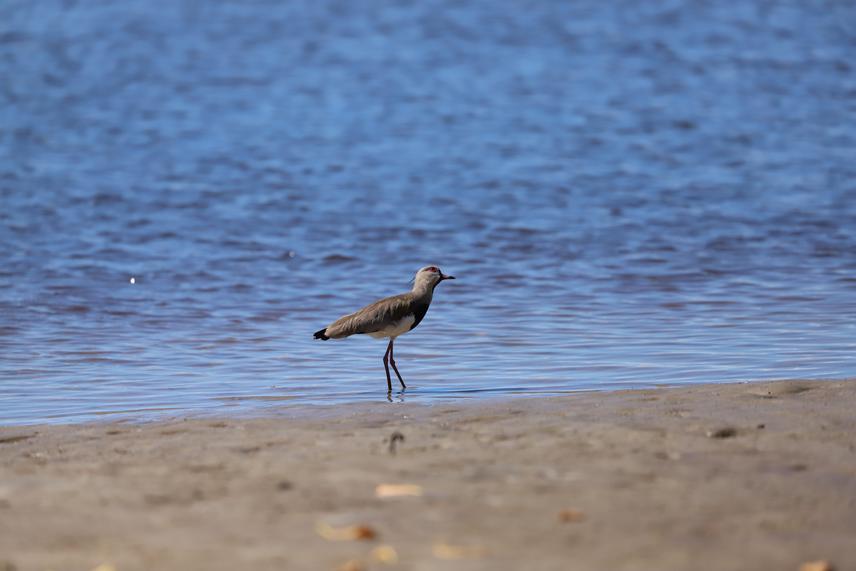Laura Facci Torezan
Urban development is one of the major drivers of biodiversity loss around the world. The topic of biodiversity responses on urban growth has gained more attention in the past decades with the rapid increase in the number of people living in cities. This led to a considerable amount of research describing the effect of urbanisation on birds in many ecosystems – but not in mangroves.
Mangroves are important for bird species, especially migratory ones. These ecosystems function as crucial stopover sites during migration, where birds can rest and feed before continuing their journey. Despite its recognized importance, mangroves are not as studied as other ecosystems. Therefore, our project aims to evaluate the influence of urbanisation on taxonomic and functional bird diversity in mangroves of southern Bahia state, Brazil.

A Southern Lapwing (Vanellus chilensis) rests in the mud exposed by the low tide in the mangroves of the Acuípe River, in Una, Bahia, Brazil. © Laura Torezan.
In order to do so, we will sample 20 mangroves located in landscapes presenting a gradient of urbanisation, which will be measured by four landscape metrics (percentages of urban area, roads and artificial nightlights and human population density) and two local metrics (number of visitors and number of boats in each sampled mangrove).
In each of the 20 mangroves, we will allocate five bird point-counts, at least 200 m distant from each other. In this method, the researcher remains for 15 minutes in each point recording all the individuals seen or heard within a fixed radius around the point. We will then estimate taxonomic (species richness and composition) and functional (functional richness, functional evenness, functional divergence and community-weighted mean trait value) bird diversity. In order to analyse the influence of the urbanisation metrics on bird taxonomic and functional diversity, we will use generalized linear models.
Moreover, we will develop an educational resource about the importance of mangrove birds, which will be used to engage the local community in their conservation. We plan to organize meetings with the local communities in order to communicate the results of our project and advertise this resource. We also intend to seek a partnership with teachers from local schools, so that the resource can be used as an awareness raising tool with their students.
This project is part of a master’s study in the Program of Ecology and Biodiversity Conservation at the Universidade Estadual de Santa Cruz, and it will allow us to understand which urbanisation metrics affect bird diversity on mangroves and help create guidelines for an urban development that is friendly to mangrove birds’ conservation.
Header: Sampling mangroves is not an easy task. A team member walks in the mangrove forest of the Salsa River during a site recognition campaign. © João Pedro Climaco.